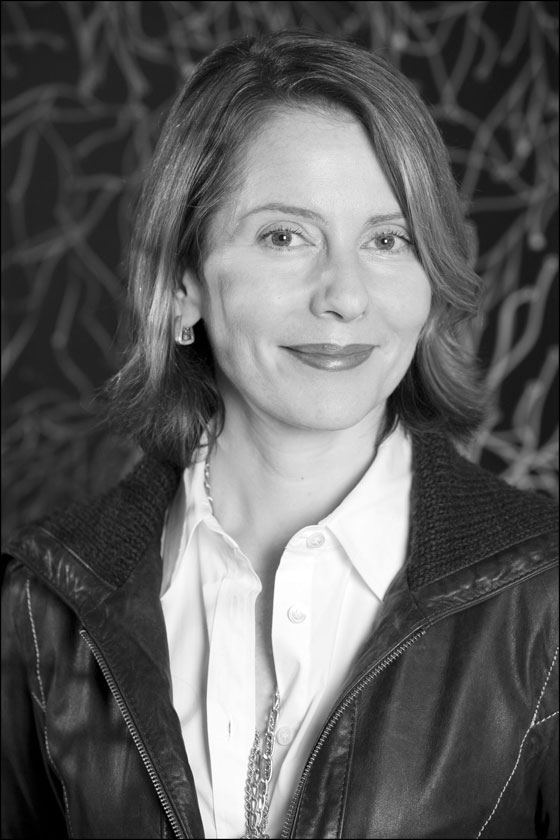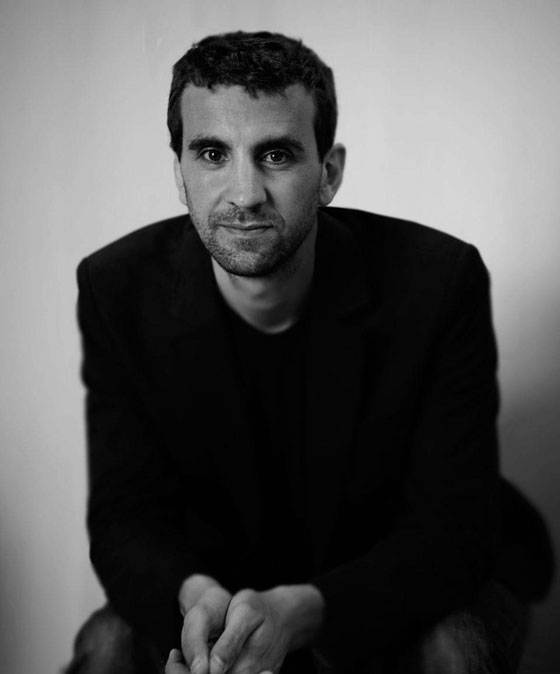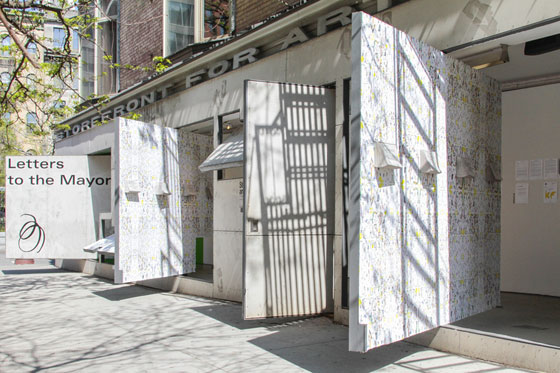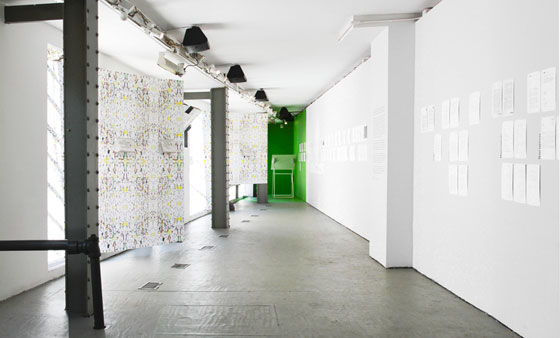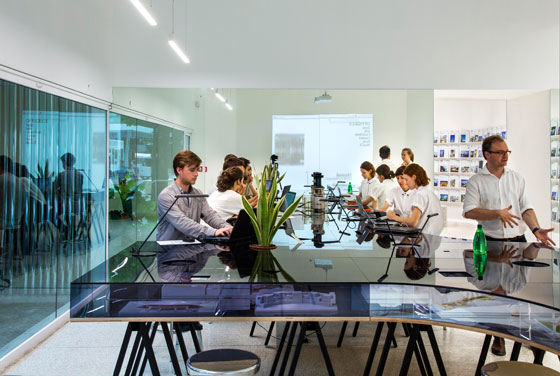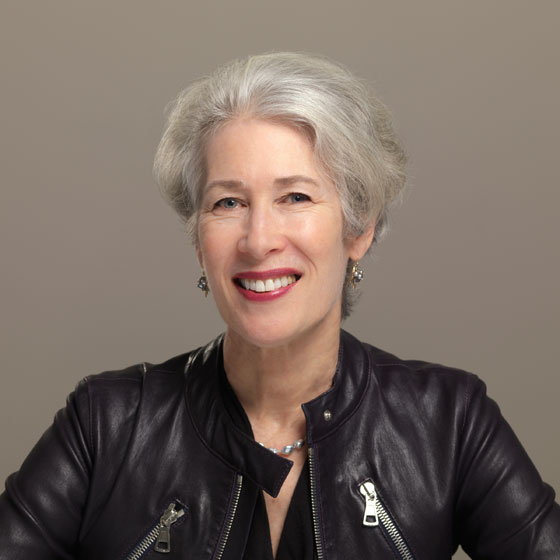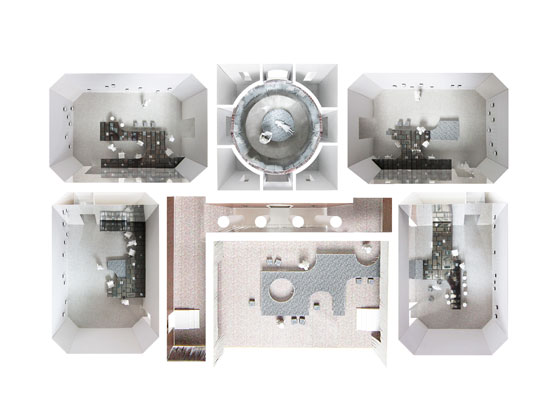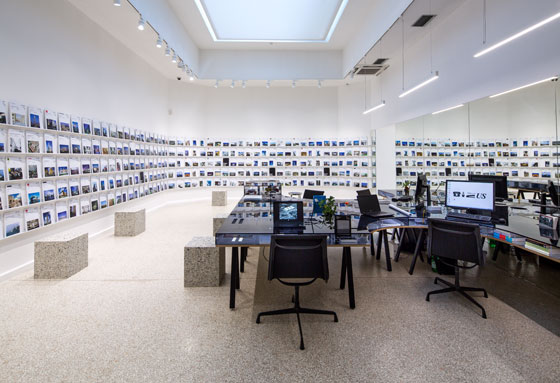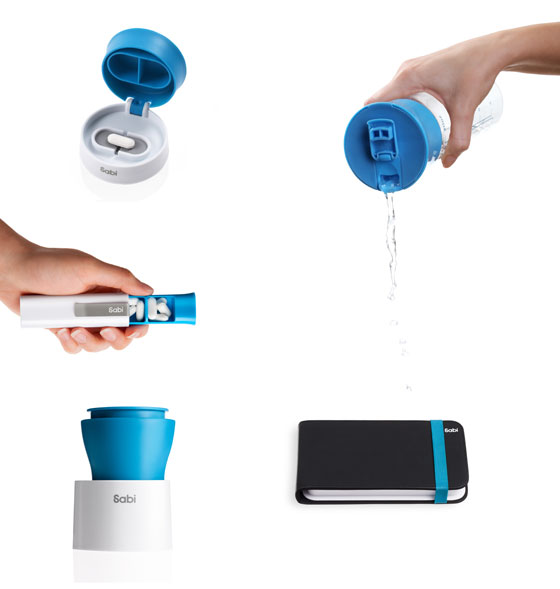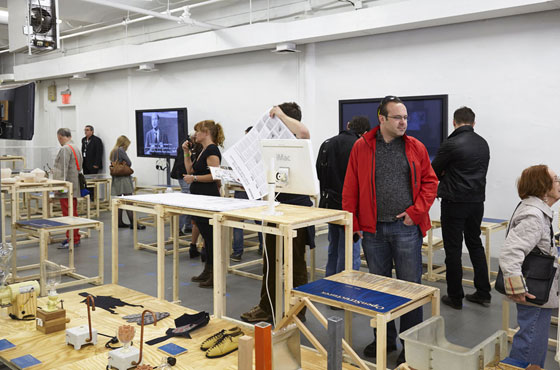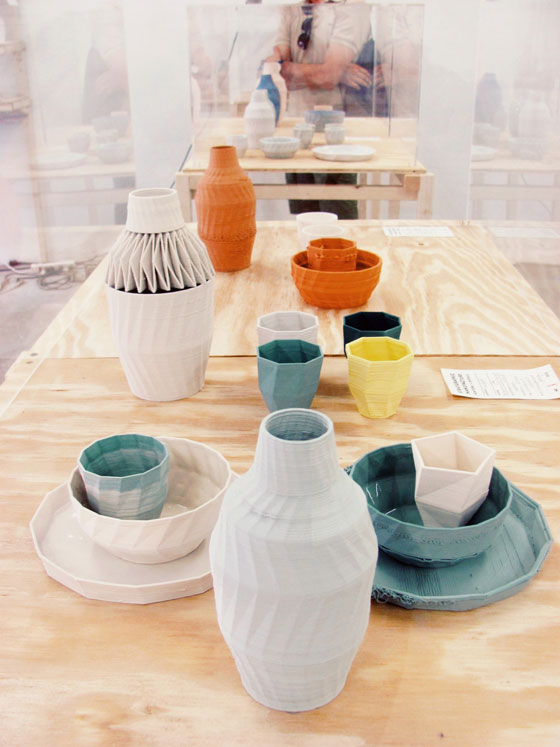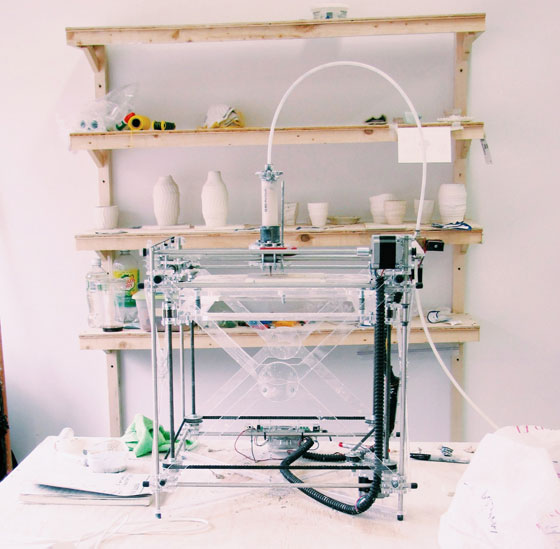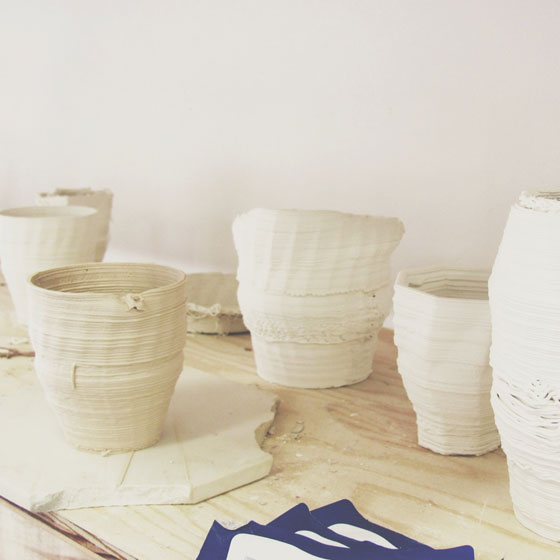Curating Design in New York City
Scritto da TLmag
Brussels, Belgio
11.08.15
How do we curate design today? A conversation with four leading critics and curators of design and architecture, active both in New York City and internationally, offers insight into the changing nature of design and its (re)presentations.
Studio Formafantasma, Botanica, 2011, © MoMA Committee on Architecture and Design Fund; photo © Luisa Zanzani
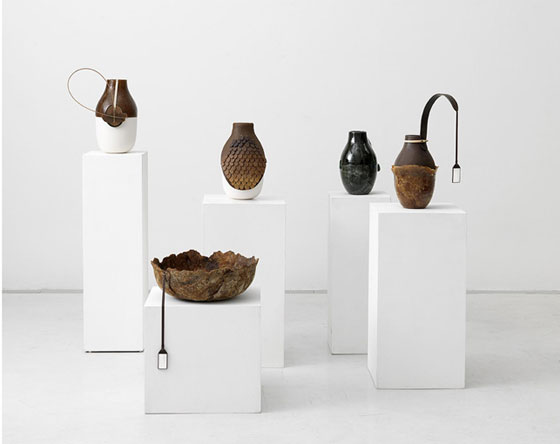
Studio Formafantasma, Botanica, 2011, © MoMA Committee on Architecture and Design Fund; photo © Luisa Zanzani
×While it’s safe to say that New York is one of the world’s art capitals, design is still on its way to getting full exposure as a significant cultural discipline. Though large institutions such as the Cooper Hewitt (Smithsonian National Design Museum), the MAD (Museum of Art and Design) and MoMA (Museum of Modern Art), as well as small-scale organizations like Storefront for Art and Architecturel play distinct roles in advancing expanded definitions of design. The efforts made are peripheral to the broader cultural sphere. “When you travel to London or Milan, everyone talks about design in a very easy and comfortable way,” MoMA senior curator of architecture and design Paola Antonelli says. “At the hairdresser’s, you won’t just find magazines like People or Hello but will also Domus or Abitare. In New York people don’t have the same ease with design but much more with contemporary art – even five-year-olds go to art galleries.”
“This Is for Everyone: Design Experiments for the Common”, MoMA, 14/2/15 - 1/1/16; photo © John Wronn
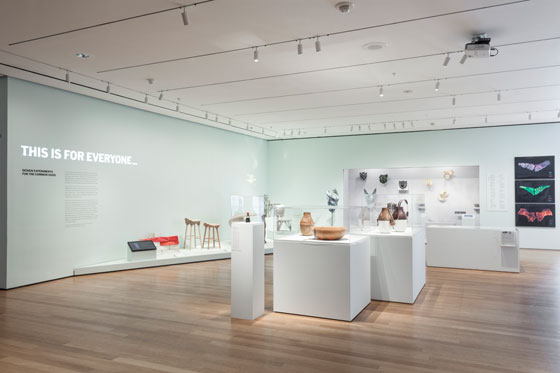
“This Is for Everyone: Design Experiments for the Common”, MoMA, 14/2/15 - 1/1/16; photo © John Wronn
×Joseph Grima, a longtime advocate of design and architecture, is the director of Ideas City, the New Museum’s annual festival addressing the future of cities through culture, and co-director of the upcoming Chicago Architecture Biennial. He says that big institutions are still straggling behind when it comes to embracing new forms of design: “New York’s design world is a fragmented landscape with no single place that’s the platform. The places that are really engaging with new applications of design and the role of technology in an interesting way are either initiatives like Rhizome, Eyebeam, or smaller galleries like Baby Castles, working exclusively with artists who use video games as their medium. And then there’s New Inc, The New Museum’s offshoot incubator, which supports practitioners working at the crossroads of art, technology and design.” These smaller galleries and initiatives play a pivotal role in giving design more real estate in New York’s cultural landscape.
However, As we look back in time, we find that momentous exhibitions have marked the shift from traditional industrial design products to more critical and socially oriented design. “I remember, Ellen Lupton organized an exhibition called Mechanical Brides: Women and Machines, from Home to Office at the Cooper-Hewitt about the gender significance of familiar household and not just about objects,” Antonelli explains. “As digital culture became more prevalent, of course, the changing role of the object itself became more of an issue. I would say that many curators have embraced this shift with a passion.”
“Letters to the Major”, Storefront for Architecture, 30/4 - 24/5/14
“Letters to the Major”, Storefront for the Architecture, 30/4 - 24/5/14
Cooper Hewitt curatorial director Cara McCarty recalls Designs for Independent Living, a show she curated at MoMA in the late eighties and which was the first exhibition of its type: “The title was very critical to the thesis of the show. It wasn’t about the objects but about designs for people with disabilities that would allow them to live without having to rely on others. There was a realization that design is all encompassing.”
Storefront for Art and Architecture – a non-profit organization located at the intersection between Chinatown, Little Italy and SoHo – has focused on social and political issues since its inception. “Looking into the archive, one finds that in 1985 Storefront presented Homeless at Home – an exhibition, series of events, performances and actions that directly addressed a huge social problem at that time in New York City,” Storefront director Eva Franch explains. “In a similar way, the 1994 Queer Space exhibition, propelled by the urgent necessity to rethink the politics of space, sought to uncover various definitions of the terms “queer” and “space” and the conceptual bonds that unite them.”
Such critical approaches are increasingly popular. They make us think and spark debate. But how does the proliferation of expanded design become apparent in acquisitions and exhibition making? “Since its very beginnings MoMA has followed the unfolding modern movement in all visual media,” Antonelli describes, “One of the widest and truest definitions of modernism is related to progress; to social ideas; to propelling the world forward. I will not propose an object because it’s historically relevant or because it’s extremely popular but primarily because it has critically pushed the world further. For the current This Is for Everyone show, celebrating the complex and sometimes ambivalent promise of contemporary design, we acquired – among other objects – Formafantasma’s speculative Botanica series. Made out of organic materials, The vases question what design might have looked like if the modern discovery of oil had never happened.”
Leong Leong & Natasha Jen/Pentagram, “OfficeUS”; photo © David Sundberg/Esto
Whereas MoMA’s modest but pointed design collection comprises 5 thousand design objects, Cooper Hewitt’s collections includes over 200 thousand – spanning thirty centuries of historical and contemporary design. However, since its reopening, the museum acknowledges the importance of focusing more on contemporary collections. Deliberately interweaving historical objects with contemporary pieces, exhibitions create thought-provoking frictions. “I love working in a design museum, because you are able to engage with all different areas of design,” McCarty expresses. “For me, design is really the intersection of art, science and technology.”
Not only is the expanded field of design moving across disciplines, it is also more involved in collaborative efforts. “I find it very interesting to collaborate with people from different backgrounds. This cross-disciplinary contamination gives a lot of agility,” Grima says. “I think it’s the same for exhibitions. You have to be able to engage all of these languages and evaluate them. It’s about which format you happen to have at your disposal at a given moment in time. A couple of years ago it was Domus magazine and now it’s an independent design studio: Space Caviar. You make the best of what you have. It’s adaptation.”
Leong Leong, “OfficeUS”, U.S. Pavillion, 2014; © Courtesy of Leong Leong
Leong Leong & Natasha Jen/Pentagram, “OfficeUS”; photo © David Sundberg/Esto
“Beautiful Users”, Cooper-Hewitt, Smithsonian National Design Museum, 2014; photo © Matt Flynn, Smithsonian Institution

“Beautiful Users”, Cooper-Hewitt, Smithsonian National Design Museum, 2014; photo © Matt Flynn, Smithsonian Institution
×Henry Dreyfuss, The Measure of Man, affice / poster, 1969; photo © Matt Flynn, Smithsonian Institution
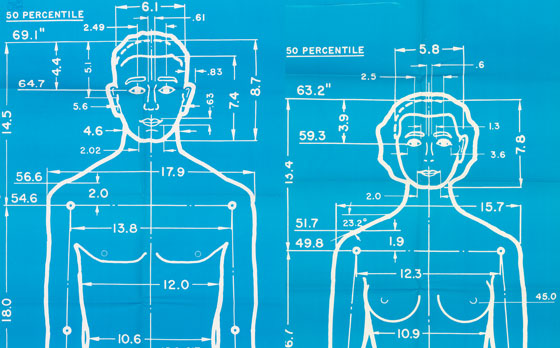
Henry Dreyfuss, The Measure of Man, affice / poster, 1969; photo © Matt Flynn, Smithsonian Institution
דBeautiful Users”, Cooper-Hewitt, Smithsonian National Design Museum, 2014; photo © Matt Flynn, Smithsonian Institution
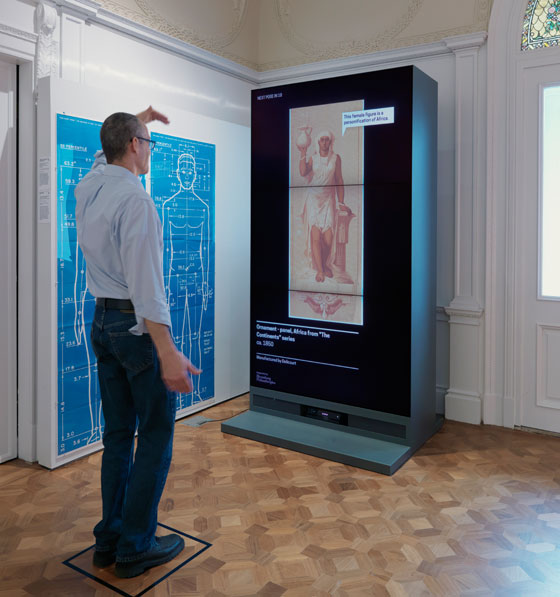
“Beautiful Users”, Cooper-Hewitt, Smithsonian National Design Museum, 2014; photo © Matt Flynn, Smithsonian Institution
×For Franch each format has its audiences, temporalities and degrees of effectiveness: “We do not believe in culture by the clock, in set durations, or in pre-established forms of engagement. Part of our role is to produce new formats that are able to break the preconceived and inherited forms of cultural production. From the non-biennial biennial that is World Wide Storefront to the non-pavilion Pavilion that was OfficeUS at the 2014 Venice Biennale of Architecture, to our event series at the gallery (Productive Disagreements, Total Enthusiasms, the Paella Series, etc.), we understand the concept of format as a thing to be constantly interrogated, reinvented and reconsidered.”
Yves Béhar, Sabi Thrive Pill Organizers & Accessoires, 2011; © Courtesy of Sabi
Jesse Howard, Transparent Tool, aspirateur improvisé/improvised Vacuum with Tube and Brush, 2012; © Courtesy of the designer

Jesse Howard, Transparent Tool, aspirateur improvisé/improvised Vacuum with Tube and Brush, 2012; © Courtesy of the designer
דAdhocracy” sous le commissariat de/curated by Joseph Grima, The New Museum
But how can a design or architecture event impact the field or, at a more tangible level, society and the everyday? “We have seen that anything, and almost anyone, can have an impact today, the question is: What kind of impact?” Franch asserts. “Last year at Storefront, for example, we opened an exhibition called Letters to the Mayor – fifty letters written by international architects to the political leaders of more than 20 cities around the world. Each letter provided a space of reflection for the architect to contribute ideas, methodologies and to express some of his or her concerns and desires that might contribute to action within political spheres. We sent the letters to each respective mayor and several of them contacted the architects to continue the conversation. The exhibition is now being reenacted in cities around the world, from Panama to Taipei.”
“The nature of the upcoming Ideas City resonates very much with Storefront,” former Storefront director Grima says. “The festival is very much about adaptation and the temporary occupation of the street. It’s a testing ground to explore the possibilities of the impermanent. Impermanent architecture is not inherently better than permanent architecture, both are needed but I think impermanent architecture is under-appreciated in its possibilities: it questions the given order, the hierarchy of space. I really think that a platform for the creations of the temporary – a nomadic city that happens every year for a brief period of time – could really transform space and the way people perceive the city.” Let’s hope these endeavors will lead New York’s public to start embracing the invigorating ideas and possibilities design and architecture bring to the world.
Unfold, céramique imprimée en 3D/Stratigraphic Manufactuary
Unfold, céramique imprimée en 3D/Stratigraphic Manufactuary
Unfold, céramique imprimée en 3D/Stratigraphic Manufactuary



